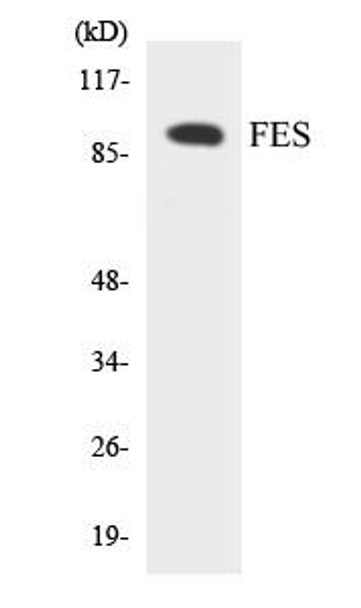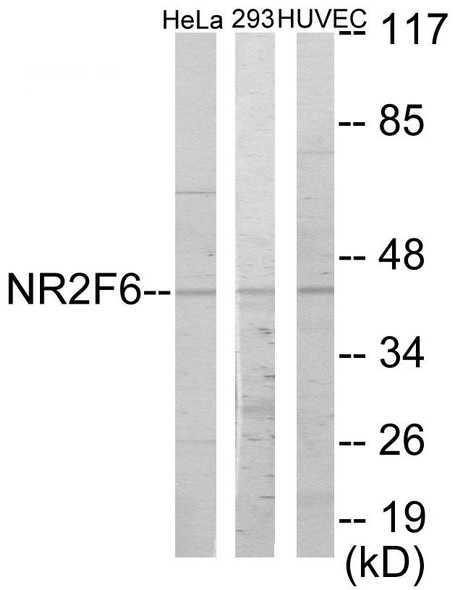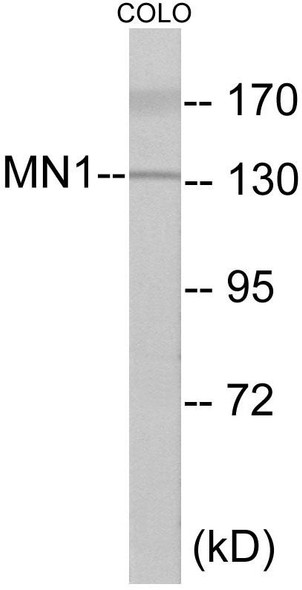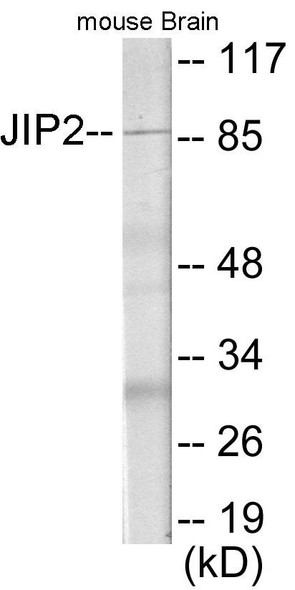Description
FES Colorimetric Cell-Based ELISA
The FES Colorimetric Cell-Based ELISA Kit is a powerful tool for researchers looking to accurately measure levels of FES (Feline Sarcoma Oncogene) in cell lysates or tissue samples. This kit offers high sensitivity and specificity, allowing for precise and reliable results in a variety of research applications.FES is a key player in the regulation of cell growth and differentiation, making it a valuable target for studying cancer and other diseases.
By accurately quantifying FES levels, researchers can gain valuable insights into the mechanisms underlying these conditions and potentially identify new therapeutic targets.The FES Colorimetric Cell-Based ELISA Kit is easy to use and provides quick results, making it an essential tool for any laboratory studying FES and its role in cellular processes. Order now and unlock the potential for groundbreaking discoveries in your research.
| Product Name: | FES Colorimetric Cell-Based ELISA |
| Product Code: | CBCAB00376 |
| ELISA Type: | Cell-Based |
| Target: | FES |
| Reactivity: | Human, Mouse |
| Dynamic Range: | > 5000 Cells |
| Detection Method: | Colorimetric 450 nmStorage/Stability:4°C/6 Months |
| Format: | 96-Well Microplate |
The FES Colorimetric Cell-Based ELISA Kit is a convenient, lysate-free, high throughput and sensitive assay kit that can detect FES protein expression profile in cells. The kit can be used for measuring the relative amounts of FES in cultured cells as well as screening for the effects that various treatments, inhibitors (ie siRNA or chemicals), or activators have on FES.
Qualitative determination of FES concentration is achieved by an indirect ELISA format. In essence, FES is captured by FES-specific primary antibodies while the HRP-conjugated secondary antibodies bind the Fc region of the primary antibody. Through this binding, the HRP enzyme conjugated to the secondary antibody can catalyze a colorimetric reaction upon substrate addition. Due to the qualitative nature of the Cell-Based ELISA, multiple normalization methods are needed:
| 1. | A monoclonal antibody specific for human GAPDH is included to serve as an internal positive control in normalizing the target absorbance values. |
| 2. | Following the colorimetric measurement of HRP activity via substrate addition, the Crystal Violet whole-cell staining method may be used to determine cell density. After staining, the results can be analysed by normalizing the absorbance values to cell amounts, by which the plating difference can be adjusted. |
| Database Information: | Gene ID: 2242, UniProt ID: P07332, OMIM: 190030, Unigene: Hs.7636 |
| Gene Symbol: | FES |
| Sub Type: | None |
| UniProt Protein Function: | Fes: a non-receptor tyrosine kinase of the Fer family. Appears to be involved in normal hematopoiesis as well as the development of acute promyelocytic leukemia. Contains one SH2 and one FCH domain. Four LOF point mutations seen in colorectal cancer. Orthologous to v-fes from feline leukemia virus and v-fps from avian transforming virus. Mutant forms are angiogenic. Promotes survival during differentiation, and may act both to promote and inhibit tumors. May be disrupted in the t(15q+;17q-) found in acute promyelocytic leukemia, but the breakpoint does not occur within the gene. |
| UniProt Protein Details: | Protein type:EC 2.7.10.2; Kinase, protein; Protein kinase, tyrosine (non-receptor); Protein kinase, TK; Oncoprotein; Tumor suppressor; TK group; Fer family Chromosomal Location of Human Ortholog: 15q26.1 Cellular Component: microtubule cytoskeleton; Golgi apparatus; extrinsic to internal side of plasma membrane; focal adhesion; cytoplasmic membrane-bound vesicle; cytoplasm; cytoplasmic vesicle; cytosol Molecular Function:protein binding; protein-tyrosine kinase activity; non-membrane spanning protein tyrosine kinase activity; phosphoinositide binding; ATP binding Biological Process: regulation of mast cell degranulation; epidermal growth factor receptor signaling pathway; regulation of cell adhesion; axon guidance; cell migration; peptidyl-tyrosine phosphorylation; positive regulation of myeloid cell differentiation; protein amino acid autophosphorylation; multicellular organismal development; positive regulation of microtubule polymerization; chemotaxis; protein amino acid phosphorylation; regulation of cell proliferation; cell proliferation; regulation of cell shape; regulation of cell differentiation; innate immune response |
| NCBI Summary: | This gene encodes the human cellular counterpart of a feline sarcoma retrovirus protein with transforming capabilities. The gene product has tyrosine-specific protein kinase activity and that activity is required for maintenance of cellular transformation. Its chromosomal location has linked it to a specific translocation event identified in patients with acute promyelocytic leukemia but it is also involved in normal hematopoiesis as well as growth factor and cytokine receptor signaling. Alternative splicing results in multiple variants encoding different isoforms.[provided by RefSeq, Jan 2009] |
| UniProt Code: | P07332 |
| NCBI GenInfo Identifier: | 115502390 |
| NCBI Gene ID: | 2242 |
| NCBI Accession: | P07332.3 |
| UniProt Secondary Accession: | P07332,Q2VXS7, Q2VXS8, Q2VXT0, Q6GTU5, B2R6E6, B4DUD0 E9PC94, E9PC95, |
| UniProt Related Accession: | P07332 |
| Molecular Weight: | 85,466 Da |
| NCBI Full Name: | Tyrosine-protein kinase Fes/Fps |
| NCBI Synonym Full Names: | FES proto-oncogene, tyrosine kinase |
| NCBI Official Symbol: | FES |
| NCBI Official Synonym Symbols: | FPS |
| NCBI Protein Information: | tyrosine-protein kinase Fes/Fps; p93c-fes; proto-oncogene c-Fes; proto-oncogene c-Fps; feline sarcoma oncogene; Oncogene FES, feline sarcoma virus; proto-oncogene tyrosine-protein kinase Fes/Fps; feline sarcoma/Fujinami avian sarcoma oncogene homolog; feline sarcoma (Snyder-Theilen) viral (v-fes)/Fujinami avian sarcoma (PRCII) viral (v-fps) oncogene homolog |
| UniProt Protein Name: | Tyrosine-protein kinase Fes/Fps |
| UniProt Synonym Protein Names: | Feline sarcoma/Fujinami avian sarcoma oncogene homolog; Proto-oncogene c-Fes; Proto-oncogene c-Fps; p93c-fes |
| Protein Family: | Festuclavine dehydrogenase |
| UniProt Gene Name: | FES |
| UniProt Entry Name: | FES_HUMAN |
| Component | Quantity |
| 96-Well Cell Culture Clear-Bottom Microplate | 2 plates |
| 10X TBS | 24 mL |
| Quenching Buffer | 24 mL |
| Blocking Buffer | 50 mL |
| 15X Wash Buffer | 50 mL |
| Primary Antibody Diluent | 12 mL |
| 100x Anti-Phospho Target Antibody | 60 µL |
| 100x Anti-Target Antibody | 60 µL |
| Anti-GAPDH Antibody | 60 µL |
| HRP-Conjugated Anti-Rabbit IgG Antibody | 12 mL |
| HRP-Conjugated Anti-Mouse IgG Antibody | 12 mL |
| SDS Solution | 12 mL |
| Stop Solution | 24 mL |
| Ready-to-Use Substrate | 12 mL |
| Crystal Violet Solution | 12 mL |
| Adhesive Plate Seals | 2 seals |
The following materials and/or equipment are NOT provided in this kit but are necessary to successfully conduct the experiment:
- Microplate reader able to measure absorbance at 450 nm and/or 595 nm for Crystal Violet Cell Staining (Optional)
- Micropipettes with capability of measuring volumes ranging from 1 µL to 1 ml
- 37% formaldehyde (Sigma Cat# F-8775) or formaldehyde from other sources
- Squirt bottle, manifold dispenser, multichannel pipette reservoir or automated microplate washer
- Graph paper or computer software capable of generating or displaying logarithmic functions
- Absorbent papers or vacuum aspirator
- Test tubes or microfuge tubes capable of storing ≥1 ml
- Poly-L-Lysine (Sigma Cat# P4832 for suspension cells)
- Orbital shaker (optional)
- Deionized or sterile water
*Note: Protocols are specific to each batch/lot. For the correct instructions please follow the protocol included in your kit.
| Step | Procedure |
| 1. | Seed 200 µL of 20,000 adherent cells in culture medium in each well of a 96-well plate. The plates included in the kit are sterile and treated for cell culture. For suspension cells and loosely attached cells, coat the plates with 100 µL of 10 µg/ml Poly-L-Lysine (not included) to each well of a 96-well plate for 30 minutes at 37°C prior to adding cells. |
| 2. | Incubate the cells for overnight at 37°C, 5% CO2. |
| 3. | Treat the cells as desired. |
| 4. | Remove the cell culture medium and rinse with 200 µL of 1x TBS, twice. |
| 5. | Fix the cells by incubating with 100 µL of Fixing Solution for 20 minutes at room temperature. The 4% formaldehyde is used for adherent cells and 8% formaldehyde is used for suspension cells and loosely attached cells. |
| 6. | Remove the Fixing Solution and wash the plate 3 times with 200 µL 1x Wash Buffer for five minutes each time with gentle shaking on the orbital shaker. The plate can be stored at 4°C for a week. |
| 7. | Add 100 µL of Quenching Buffer and incubate for 20 minutes at room temperature. |
| 8. | Wash the plate 3 times with 1x Wash Buffer for 5 minutes each time. |
| 9. | Add 200 µL of Blocking Buffer and incubate for 1 hour at room temperature. |
| 10. | Wash 3 times with 200 µL of 1x Wash Buffer for 5 minutes each time. |
| 11. | Add 50 µL of 1x primary antibodies (Anti-FES Antibody and/or Anti-GAPDH Antibody) to the corresponding wells, cover with Parafilm and incubate for 16 hours (overnight) at 4°C. If the target expression is known to be high, incubate for 2 hours at room temperature. |
| 12. | Wash 3 times with 200 µL of 1x Wash Buffer for 5 minutes each time. |
| 13. | Add 50 µL of 1x secondary antibodies (HRP-Conjugated AntiRabbit IgG Antibody or HRP-Conjugated Anti-Mouse IgG Antibody) to corresponding wells and incubate for 1.5 hours at room temperature. |
| 14. | Wash 3 times with 200 µL of 1x Wash Buffer for 5 minutes each time. |
| 15. | Add 50 µL of Ready-to-Use Substrate to each well and incubate for 30 minutes at room temperature in the dark. |
| 16. | Add 50 µL of Stop Solution to each well and read OD at 450 nm immediately using the microplate reader. |
(Additional Crystal Violet staining may be performed if desired – details of this may be found in the kit technical manual.)






